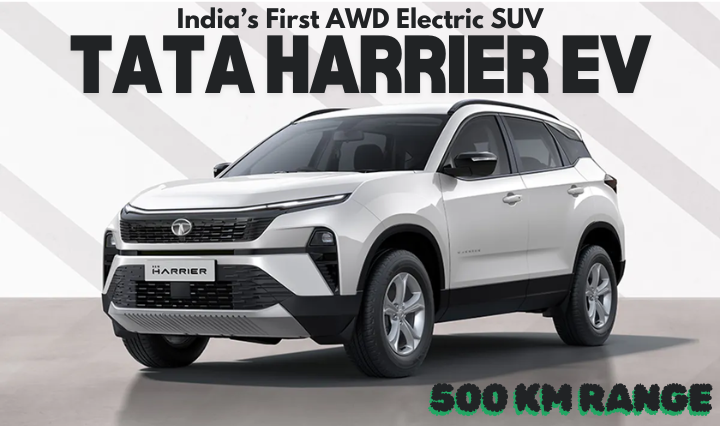Jeep Avenger vs. Competitors: Which One’s Better?

Jeep Avenger is a Compact SUV which is expected to launch in India in Apr 2025 in the expected price range of Rs. 8.00 – 12.00 Lakh.
Read about Kia EV9.
JEEP AVENGER Key Information
WLTP Range Up to 400 kms | Real Range Up to 330 kms | Battery Size 54kWh |
Max Charge Speed 100kW | No. of Seats 5 | 0 – 100 kph 9.0 seconds |
Advantages
- Characterful design
- Compact and great in town
- Good range and charging speed
Disadvantages
- Base trim lacks key kit
- Back seats are cramped
- Alternatives are faster

Overview
Jeep is likely to launch the New Jeep Avenger SUV in India sometime in 2025. It will be offered here with ICE power before the all-electric model is launched around 2026.
Jeep isn’t a brand you’d generally accomplice with small, environmentally accountable electric powered motors. For numerous many years now, its bread-and-butter has been big, hard and unashamedly brash off-roaders, forging its photograph as an all-American icon.
But even manufacturers together with Jeep want to get with the instances if they’re to have an area in a international in which lowering emissions is greater crucial to the survival of the planet (and the entirety on it) than ever.
That’s why this new Jeep, the Avenger, could be very unique from the norm. For starters its very small (in reality its the smallest Jeep because the unique Willys from the 1940s), its front-wheel force and powered in simple terms through electricity. No gas-guzzling V8s here. In reality, it wasn`t even designed withinside the USA, neither is it on sale over there.
This could be very a good deal a European Jeep, designed in Italy and constructed in Poland. That is due to the fact Jeep is a part of the Stellantis Group, sharing additives with motors together with the Vauxhall Mokka Electric, Peugeot e-2008 and Fiat 600e. But does it provide some thing the ones motors don’t? We’ll discover on this review.

Is the Jeep Avenger a good car?
In many ways Jeep’s first electric car is its best product for many years. It provides a more civilised on-road driving experience than other Jeeps and we love the refreshingly small size, and the quirkly little touches that make it an interesting alternative to rivals.
Of course, this is no off-road Jeep Avenger but with a respectable range and decent charging speeds, it’s an urban EV that isn’t out of its depth on long journeys. Granted, many alternatives are faster and roomier in the back, but these are fair compromises for a genuinely compact, affordable and efficient electric car.

Range & Charging
The Jeep Avenger is very much an urban-focused model, but there’s useful range in reserve should you plan on doing more than pottering about town.
Regardless of trim level, all versions are capable of up to 249 miles of range under official WLTP testing procedures. We’d peg that at around 210 miles in mixed real-world driving and mild weather.
That means fewer charging stops for long journeys but also, given the modest battery size, strong efficiency. In our testing we found it would consistently achieve over four miles per kWh, meaning your pence-per-mile costs will be low – a big advantage if you can’t charge at home.
While those range figures are about twice what a Mazda MX-30 is capable of, and slightly ahead of a bigger battery Renault Zoe, they’re a little less than the Kia Soul EV and Smart #1.
Still, it’s impressive to see a heat pump fitted as standard across the Avenger line-up, something that’s optional on many premium models. It should significantly reduce the need to use the heater in cold weather, which has an impact on range and efficiency.
Jeep Avenger: battery size and charging
The Avenger gets the same battery pack as all the most recently launched or updated Stellantis models. That means a total capacity of 54kWh and a usable capacity (the bit you can actually use when charging) of 51kWh.
It’s a good illustration of how efficient the little Jeep is compared with some bigger rivals, because both the MG ZS and Smart #1 have similar sized battery packs but have quoted ranges of under 200 miles. Even the base Hyundai Kona Electric, with its 48kWh usable pack, manages just 234 miles officially.
Nevertheless, all of those cars can be ordered with larger batteries for longer ranges, whereas the Avenger makes do with just one pack option.
The Avenger’s maximum DC charging speed of 100kW is more than a Kia Soul and entry-level Kona Electric can deliver, but less than the Smart #1 and Volvo EX30. That modest battery size means a 10-80% charge using a suitable High Power charger (such as those on the GRIDSERVE Electric Highway) in around 26 minutes.
A 7kW home wallbox will replenish the Avenger’s battery from empty to full in a little over eight hours. Unlike some related Stellantis EVs, the Avenger also comes with 11kW on-board AC charging as standard, to make the best use of destination chargers, such as those at supermarkets – although 22kW charging isn’t available.
Charging speeds (source: EV database):
7kW AC charging: 8hrs 15mins
11kW charging: 5hrs 30mins
50kW rapid charger (10 to 80% charge): 50 mins
150kW+ rapid charger (10 to 80% charge): 26 mins

Practicality
Don’t take one have a take a observe the Jeep Avenger and expect it’s a fully-fledged SUV – in phrases of dimensions it’s greater like a raised-up small hatchback. Amazingly, it`s handiest more than one centimeters longer than a Vauxhall Corsa Electric, and no wider.
That obviously leads to compromises when it comes to space inside. We’ve no complaints with front seat space, with good leg and headroom for a pair of six footers. But it’s the rear seats where things get a bit tight for adults.
Headroom is entirely acceptable, instead it’s legroom that’s in short supply. Four six-footers will fit for short journeys, but only just, and those in the back will find their legs squished against the (happily soft) front seatbacks. Smaller adults will be okay for longer journeys and children will be just fine, but getting three across the back row is ambitious because there’s a big hump in the floor, and the center console protrudes into what little leg space there is.

Jeep Avenger touchscreen, infotainment, stereo and tech
Every version of the Avenger comes equipped with a 10.25-inch central touchscreen, mounted high up on the dash in your line of sight. It’s also easy to reach on the move, while the two physical shortcut buttons make it easy to divert back to the home menu and turn off lane keeping assist.
The screen’s software is also good, responding quickly to commands and with an intuitive menu layout. Wireless Apple CarPlay and Android Auto are standard, which is necessary because (like the updated Peugeot e-2008) lesser versions of the Avenger don’t have sat nav as standard. It’s included in top-spec Summit trim, but part of an affordable option pack on other trims that also brings traffic sign recognition.

On the road
If you’re familiar with Peugeot, Citroen and Vauxhall electric cars then the Jeep Avenger’s performance will be familiar. It uses the same 154bhp electric motor, powering the front wheels only, enabling a 0-62mph time of 9.0 seconds.
That’s pretty leisurely in the context of most electric cars – many alternatives, from the Smart #1 to the Cupra Born, are substantially faster in every situation. Even the Peugeot e-208 is quicker, too.
It’s worth noting that you don’t get maximum power in the Avenger’s ‘Normal’ drive mode. You’ll need Sport mode to unlock the full power and torque delivery, where it’s stronger off-the-line, if hardly exciting.
Behind the numbers, the Jeep feels perky enough most of the time. It’s nippy for town use and not out of its depth on the open road, although when it’s loaded up with people and building up speed on a motorway slip road you can’t help but wish for more oomph.
The Avenger’s brake pedal also takes a bit of getting used to, feeling a little springy, though the brakes are strong. You also don’t get properly controllable regenerative braking or one-pedal driving, just a light regen effect in normal drive and a more pronounced slowing in ‘B’ mode.




